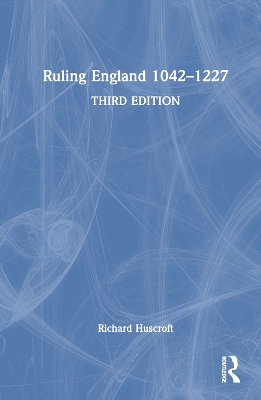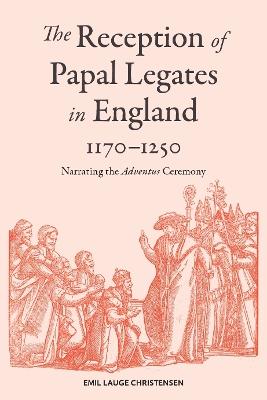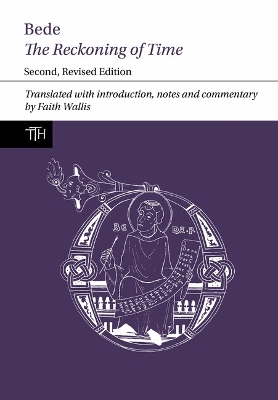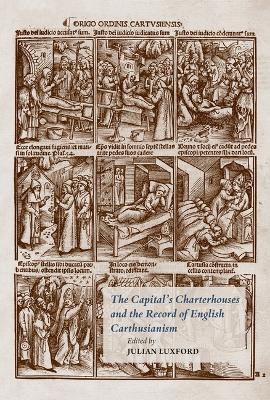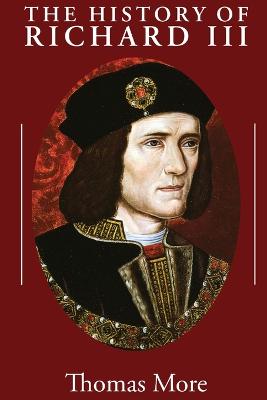Ruling England 1042-1227
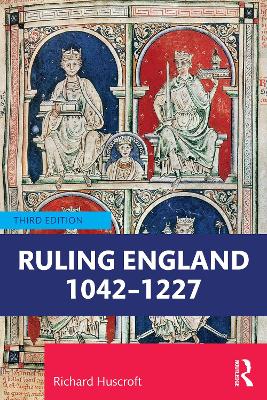 portes grátis
portes grátis
Ruling England 1042-1227
Huscroft, Richard
Taylor & Francis Ltd
04/2025
278
Mole
9781032232102
Pré-lançamento - envio 15 a 20 dias após a sua edição
Descrição não disponível.
Part I. Late Anglo-Saxon England, 1042-1066
1. The reigns, 1042-1066
Edward the Confessor, 1042-1066
Harold II, January-October 1066
The interregnum, 14 October-25 December 1066
2. Ruling the kingdom, 1042-1066
King and nobility
The crisis of 1051-1052
Royal government
Local government
Royal wealth
Military organisation
Women and political power
Conclusion
3. The kings and the law, 1042-1066
Codes and cases
Courts and communities
Trial and punishment
Conclusion
4. The kings and the Church, 1042-1066
The late Anglo-Saxon Church
Royal government and the Church
England and the papacy
A backward Church in need of reform?
Part II. Anglo-Norman England, 1066-1154
5. The reigns, 1066-1154
William I 'the Conqueror', 1066-1087
William II 'Rufus', 1087-1100
Henry I, 1100-1135
1109-1113
1116-1120
1123-1124
Stephen, 1135-1154
6. Ruling the kingdom, 1066-1154
King and nobility
Cross-Channel government
The royal household
Local government
Royal wealth
Military organisation
Government in writing
The reign of Stephen
Women and political power
Conclusion
7. The kings and the law, 1066-1154
Continuity and change
The principal courts
The criminal law
Civil cases
Women, land and the law
Conclusion
8. The kings and the Church, 1066-1154
The Church in Normandy
Controlling the English Church
Other reforms
Kings, archbishops and popes
Canterbury and York
The reign of Stephen
The king's Jews
Conclusion
Part III. Angevin England, 1154-1227
9. The reigns, 1154-1227
Henry II, 1154-1189
Richard I, 1189-1199
John, 1199-1216
The minority of Henry III, 1216-1227
10. Ruling the kingdom, 1154-1227
The Angevin Empire
The restoration of royal authority
King and nobility
Royal government
Women and political power
Local government
Royal wealth
Military organisation
The road to Runnymede
The minority of Henry III
11. The kings and the law, 1154-1227
The background to the reforms
The operation of the system
The reforms
The effects of the reforms
Magna Carta and the common law
Conclusion
12. The kings and the Church, 1154-1227
The papacy and canon law
Royal expectations
Henry II and Thomas Becket
John and Innocent III
England's Jews: Murder and massacre
The minority of Henry III
The principal narrative sources and their authors, 1042-1227
Suggestions for further reading
1. The reigns, 1042-1066
Edward the Confessor, 1042-1066
Harold II, January-October 1066
The interregnum, 14 October-25 December 1066
2. Ruling the kingdom, 1042-1066
King and nobility
The crisis of 1051-1052
Royal government
Local government
Royal wealth
Military organisation
Women and political power
Conclusion
3. The kings and the law, 1042-1066
Codes and cases
Courts and communities
Trial and punishment
Conclusion
4. The kings and the Church, 1042-1066
The late Anglo-Saxon Church
Royal government and the Church
England and the papacy
A backward Church in need of reform?
Part II. Anglo-Norman England, 1066-1154
5. The reigns, 1066-1154
William I 'the Conqueror', 1066-1087
William II 'Rufus', 1087-1100
Henry I, 1100-1135
1109-1113
1116-1120
1123-1124
Stephen, 1135-1154
6. Ruling the kingdom, 1066-1154
King and nobility
Cross-Channel government
The royal household
Local government
Royal wealth
Military organisation
Government in writing
The reign of Stephen
Women and political power
Conclusion
7. The kings and the law, 1066-1154
Continuity and change
The principal courts
The criminal law
Civil cases
Women, land and the law
Conclusion
8. The kings and the Church, 1066-1154
The Church in Normandy
Controlling the English Church
Other reforms
Kings, archbishops and popes
Canterbury and York
The reign of Stephen
The king's Jews
Conclusion
Part III. Angevin England, 1154-1227
9. The reigns, 1154-1227
Henry II, 1154-1189
Richard I, 1189-1199
John, 1199-1216
The minority of Henry III, 1216-1227
10. Ruling the kingdom, 1154-1227
The Angevin Empire
The restoration of royal authority
King and nobility
Royal government
Women and political power
Local government
Royal wealth
Military organisation
The road to Runnymede
The minority of Henry III
11. The kings and the law, 1154-1227
The background to the reforms
The operation of the system
The reforms
The effects of the reforms
Magna Carta and the common law
Conclusion
12. The kings and the Church, 1154-1227
The papacy and canon law
Royal expectations
Henry II and Thomas Becket
John and Innocent III
England's Jews: Murder and massacre
The minority of Henry III
The principal narrative sources and their authors, 1042-1227
Suggestions for further reading
Este título pertence ao(s) assunto(s) indicados(s). Para ver outros títulos clique no assunto desejado.
medieval;post-conquest England;kingship;Magna Carta;Anglo-Saxon England;Anglo-Norman England;Angevin England;Domesday Book;the Bayeux Tapestry;Thomas Becket;Medieval Church;Edward the Confessor;Harold Godwinson;Edgar the AEtheling;William the Conqueror;William I;William II;Henry I;Stephen;Matilda;Henry II;Henry the younger King;Richard I;John;Louis
Part I. Late Anglo-Saxon England, 1042-1066
1. The reigns, 1042-1066
Edward the Confessor, 1042-1066
Harold II, January-October 1066
The interregnum, 14 October-25 December 1066
2. Ruling the kingdom, 1042-1066
King and nobility
The crisis of 1051-1052
Royal government
Local government
Royal wealth
Military organisation
Women and political power
Conclusion
3. The kings and the law, 1042-1066
Codes and cases
Courts and communities
Trial and punishment
Conclusion
4. The kings and the Church, 1042-1066
The late Anglo-Saxon Church
Royal government and the Church
England and the papacy
A backward Church in need of reform?
Part II. Anglo-Norman England, 1066-1154
5. The reigns, 1066-1154
William I 'the Conqueror', 1066-1087
William II 'Rufus', 1087-1100
Henry I, 1100-1135
1109-1113
1116-1120
1123-1124
Stephen, 1135-1154
6. Ruling the kingdom, 1066-1154
King and nobility
Cross-Channel government
The royal household
Local government
Royal wealth
Military organisation
Government in writing
The reign of Stephen
Women and political power
Conclusion
7. The kings and the law, 1066-1154
Continuity and change
The principal courts
The criminal law
Civil cases
Women, land and the law
Conclusion
8. The kings and the Church, 1066-1154
The Church in Normandy
Controlling the English Church
Other reforms
Kings, archbishops and popes
Canterbury and York
The reign of Stephen
The king's Jews
Conclusion
Part III. Angevin England, 1154-1227
9. The reigns, 1154-1227
Henry II, 1154-1189
Richard I, 1189-1199
John, 1199-1216
The minority of Henry III, 1216-1227
10. Ruling the kingdom, 1154-1227
The Angevin Empire
The restoration of royal authority
King and nobility
Royal government
Women and political power
Local government
Royal wealth
Military organisation
The road to Runnymede
The minority of Henry III
11. The kings and the law, 1154-1227
The background to the reforms
The operation of the system
The reforms
The effects of the reforms
Magna Carta and the common law
Conclusion
12. The kings and the Church, 1154-1227
The papacy and canon law
Royal expectations
Henry II and Thomas Becket
John and Innocent III
England's Jews: Murder and massacre
The minority of Henry III
The principal narrative sources and their authors, 1042-1227
Suggestions for further reading
1. The reigns, 1042-1066
Edward the Confessor, 1042-1066
Harold II, January-October 1066
The interregnum, 14 October-25 December 1066
2. Ruling the kingdom, 1042-1066
King and nobility
The crisis of 1051-1052
Royal government
Local government
Royal wealth
Military organisation
Women and political power
Conclusion
3. The kings and the law, 1042-1066
Codes and cases
Courts and communities
Trial and punishment
Conclusion
4. The kings and the Church, 1042-1066
The late Anglo-Saxon Church
Royal government and the Church
England and the papacy
A backward Church in need of reform?
Part II. Anglo-Norman England, 1066-1154
5. The reigns, 1066-1154
William I 'the Conqueror', 1066-1087
William II 'Rufus', 1087-1100
Henry I, 1100-1135
1109-1113
1116-1120
1123-1124
Stephen, 1135-1154
6. Ruling the kingdom, 1066-1154
King and nobility
Cross-Channel government
The royal household
Local government
Royal wealth
Military organisation
Government in writing
The reign of Stephen
Women and political power
Conclusion
7. The kings and the law, 1066-1154
Continuity and change
The principal courts
The criminal law
Civil cases
Women, land and the law
Conclusion
8. The kings and the Church, 1066-1154
The Church in Normandy
Controlling the English Church
Other reforms
Kings, archbishops and popes
Canterbury and York
The reign of Stephen
The king's Jews
Conclusion
Part III. Angevin England, 1154-1227
9. The reigns, 1154-1227
Henry II, 1154-1189
Richard I, 1189-1199
John, 1199-1216
The minority of Henry III, 1216-1227
10. Ruling the kingdom, 1154-1227
The Angevin Empire
The restoration of royal authority
King and nobility
Royal government
Women and political power
Local government
Royal wealth
Military organisation
The road to Runnymede
The minority of Henry III
11. The kings and the law, 1154-1227
The background to the reforms
The operation of the system
The reforms
The effects of the reforms
Magna Carta and the common law
Conclusion
12. The kings and the Church, 1154-1227
The papacy and canon law
Royal expectations
Henry II and Thomas Becket
John and Innocent III
England's Jews: Murder and massacre
The minority of Henry III
The principal narrative sources and their authors, 1042-1227
Suggestions for further reading
Este título pertence ao(s) assunto(s) indicados(s). Para ver outros títulos clique no assunto desejado.
medieval;post-conquest England;kingship;Magna Carta;Anglo-Saxon England;Anglo-Norman England;Angevin England;Domesday Book;the Bayeux Tapestry;Thomas Becket;Medieval Church;Edward the Confessor;Harold Godwinson;Edgar the AEtheling;William the Conqueror;William I;William II;Henry I;Stephen;Matilda;Henry II;Henry the younger King;Richard I;John;Louis

